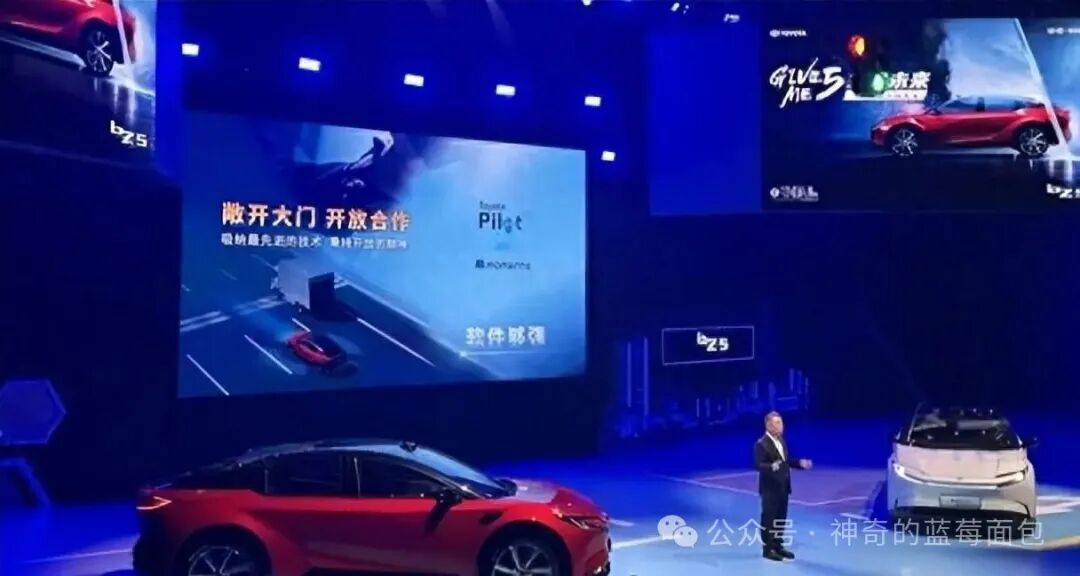High computing power and abundant sensors: The FAW Toyota bZ5 tackles Beijing’s evening rush hour.
If you still think that joint venture new energy vehicles are just “oil-to-electric conversions with reduced configurations,” you really need to take a look at the bZ5. Honestly, this newly launched “dark horse of joint ventures” has almost completely overturned my long-held impressions of joint venture pure electric vehicles after a spin during Beijing’s evening rush hour.
First, let’s set the scene: Wednesday evening at 6:30 PM, from Guomao to Wangjing, the navigation estimated a travel time of 1 hour and 18 minutes. Before heading out, I made sure to fully charge my phone, thinking I could watch short videos to pass the time. However, I was surprised by the bZ5’s performance throughout the journey, which turned “traffic jams” into a technological experience showcase.

First and foremost, I have to commend the computing power. With a 544 Tops chip and 33 sensors, including millimeter-wave radar, lidar, and ultrasonic sensors, it has everything covered. While other cars are still stacking hardware, the bZ5 directly utilizes large models to enhance intelligent driving. During the evening rush hour, with all the lane changes, erratic driving, and sudden stops from small electric vehicles, it can “predict” these actions in advance, easing off the throttle and gently braking, making me, an experienced driver, feel somewhat unnecessary.At one point, when a car suddenly changed lanes, the bZ5 simply applied the brakes lightly and smoothly followed suit without any hesitation. A friend in the passenger seat joked, “Sitting next to you feels like watching a movie; you’re not the main character.”
In fact, joint venture brands often take a conservative approach to intelligent driving. However, Toyota has clearly changed its strategy this time. You can feel that the underlying logic of the bZ5 is not about “showing off technology” but rather about “providing peace of mind.” For example, when approaching a yellow light at an intersection, it doesn’t rush through but decelerates steadily; when encountering a taxi trying to cut in, the system maintains a safe distance and never slams on the brakes. This style may not be thrilling, but it genuinely reduces many heart-pounding moments.

Next, let’s talk about the intelligent cockpit. The 15.6-inch large screen features a three-finger split screen, allowing the passenger to watch shows while the driver navigates without interference. The voice assistant recognizes commands extremely quickly; saying “turn on the ambient light” instantly changes the interior color, creating an atmosphere even cozier than at home. The most interesting feature is the fragrance system, which allows for easy switching between three cartridges. When stuck in traffic and feeling frustrated, changing the scent can significantly improve your mood. This time, Toyota has truly understood the “small happiness” of Chinese users, and detail-oriented individuals will surely be satisfied.
Another strong point of the bZ5 is its sense of safety. Not to mention, the car is equipped with 9 airbags and a triple protection system for the battery pack, with over 100 collision tests reportedly conducted. During a heavy rainstorm, the lidar can accurately identify obstacles ahead through the rain curtain—this is essential in a big city like Beijing, where “the city comes to a standstill at the first drop of rain.” When a small truck suddenly changed lanes in front of me, I was about to instinctively hit the brakes, but the bZ5 had already handled it for me. Honestly, for the first time, I felt a real sense of being “thoroughly protected.”

Of course, there are some drawbacks. For instance, while the intelligent driving is stable, it can sometimes be a bit “too conservative”; there are times when it could change lanes but chooses to wait instead. Additionally, some apps in the car’s system load a bit slowly, possibly due to network issues. However, these minor shortcomings are really nothing compared to the overall sense of safety it provides.
By the way, regarding range: during the evening rush hour, moving at a snail’s pace with the air conditioning on, I drove 56 kilometers and lost less than 9% battery. The official range is stated to be 550 kilometers, and based on my real-world experience, the bZ5 is definitely reliable for urban commuting. The fast charging is also quick; it can regain most of its charge in just 30 minutes, so while enjoying a spicy hot pot, the battery is back up.
As I write this, I feel a bit emotional. In the past, we used to say that “domestic electric vehicles are far ahead,” while joint venture brands either followed the trend or lagged behind; but the bZ5 is clearly not here just to “fill the numbers.” It may not be the cheapest option with the most features, but in terms of technology and experience, it is starting to engage seriously with the Chinese market. Is it the industry ceiling? It’s still too early to say. However, the counterattack of joint venture electric vehicles has indeed begun.
Finally, I leave a question for everyone: If you need a pure electric SUV that can be used for commuting to work and occasionally taking the family on a road trip, would the bZ5 be your first choice? Or do domestic brands still hold greater appeal? Feel free to leave your comments.